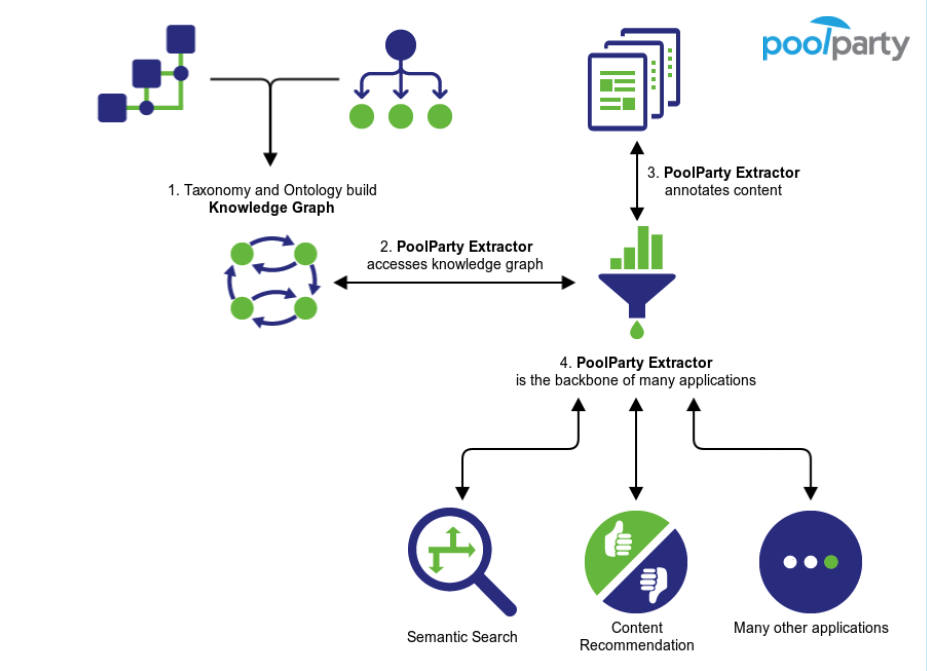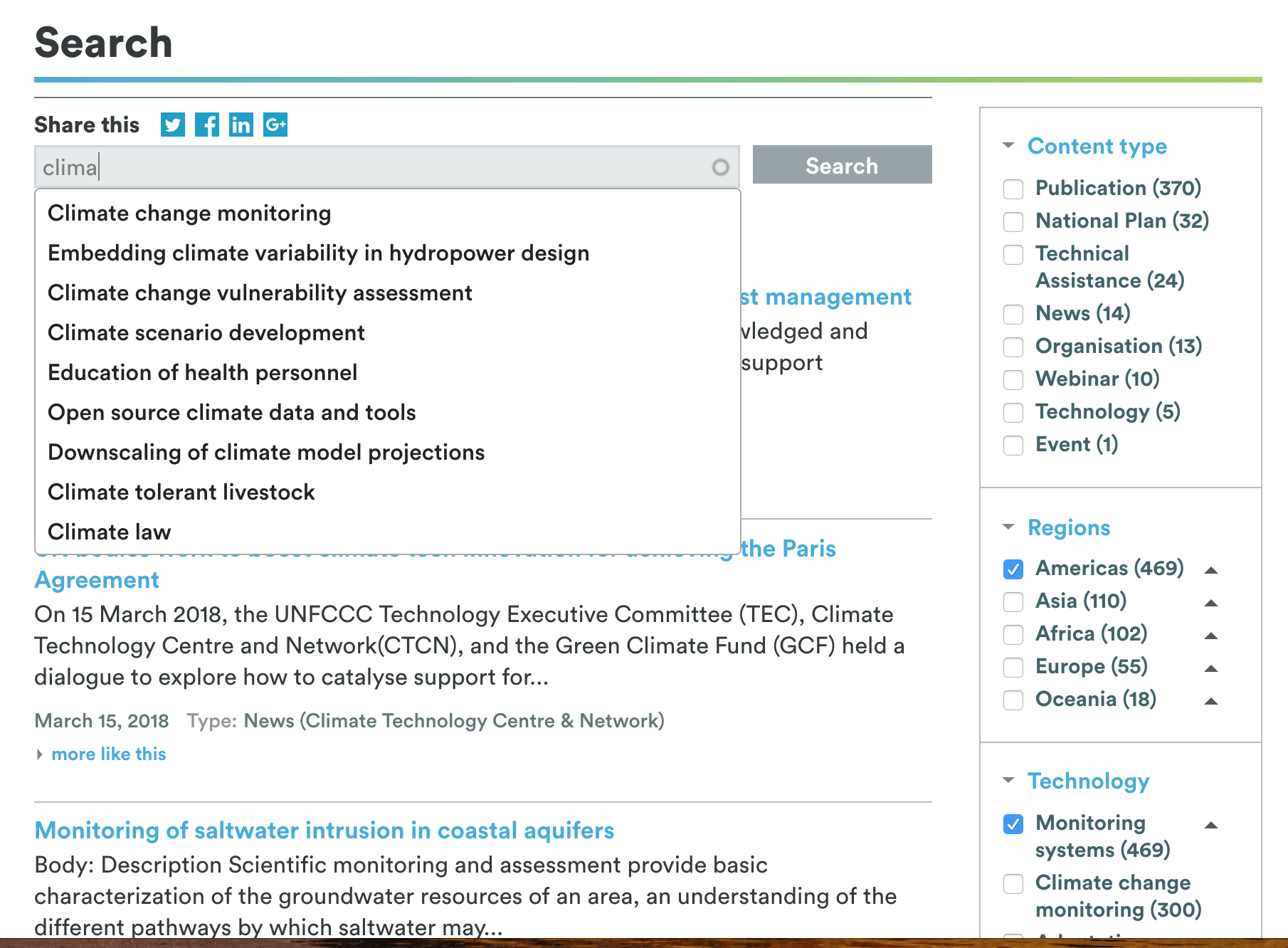Learn more
- Apr 5, 2018
Integrating your Drupal CMS with an Out-of-the-Box Semantic Technology Suite
Drupal is one of the favourite enterprise content management systems. Especially government and non-governmental organizations embrace this open source platform to build advanced digital experiences.
Over the last years, we have been developing several PoolParty semantic technology features and modules that integrate natively into Drupal. In this blog post, I introduce you to the semantic technology capabilities that will enhance your digital products and services. Learn all about the PoolParty features for Drupal and how to get started.
How to manage your content with semantic technologies
Essential for a successful website and important criteria to choose one CMS over another is their power to achieve a well-planned information architecture. As our Swedish partner stresses: “Proper information management should be the first step in every digitalization project.”
And this is precisely where semantic technologies can bring the most. They are a long-term and future-proof solution to improve both your website’s front- and back-end with powerful information and knowledge management capabilities.
In the front-end, you will be able to offer personalized and highly dynamic content to your users. By annotating your content semantically, you are connecting concepts and thus automatically adding context and meaning to it. In the back-end, you will support content managers with superior collaborative workflows and findability of all internal and external resources for further reuse.

A Look Inside Semantic Metadata Management
Our customer is a think tank and knowledge hub for climate change technologies and also highly involved in building a worldwide community that benefits from synergies. They were looking for a solution to underpin several information management challenges:
- Harvest relevant data and information around the world
- Integrate data from different sources in several formats
- Link such data along climate technology domain
- Provide comprehensive information in easy to use manner
- Develop useful services for all stakeholders on top
- Act in a dynamic and multi-stakeholder environment
The solution was to annotate their content semantically and to improve search functionalities. Drupal taxonomy editor tool could be an option but is quite rudimentary and will not allow you to manage your metadata semantically in a proper way.
To achieve consistent semantic metadata, you need to develop a knowledge graph and embed it in your Drupal CMS.
A knowledge graph is a central knowledge management model worked throughout the whole organization (or a part of an organization) with the special participation of subject matter experts.
It is an agreement upon a common vocabulary that designates all relevant domains and topics inside the organization. Even more, it allows the organization to use knowledge in several languages, to define synonyms, relations, and hierarchies.
The following graph explains how our customer improved content annotation and consequently their search portal with PoolParty Semantic Suite.

First of all, our customer built a knowledge graph. You can create your knowledge graph with the PoolParty feature for Drupal named PoolParty Taxonomy Manager. The Taxonomy Manager is very user-friendly and can be used by several domain experts in a very intuitive way.
By having a knowledge graph in place, you can make use of the next future for Drupal. Supported by the PoolParty Extractor – which accesses the knowledge graph to annotate the content – PoolParty PowerTagging module for Drupal find the proper tags and add it automatically to your content.
PowerTagging considers the concepts you defined in your taxonomy to tag your content and goes way beyond by considering synonyms, frequency, and even context.
As a next step, your content professional can check the tags and adjust them if necessary. Furthermore, the knowledge graph will learn from your new content and suggest extensions for the thesaurus.
Finally, our customer applied PoolParty GraphSearch (a front-end application for search and analytics operations) to build their search portal that offers a faceted semantic search and a similarity algorithm.
For more in detail information, please check out this presentation.
How semantic technologies shape a better customer experience
Our customer annotated approx. 15.000 documents with PoolParty. As a result, they offer a semantic search portal that let users drill down facets defined in the knowledge graph such as content type, regions, and technology (look on the right-hand side of the image below).
Faceted search improves navigation friendliness and increases customer satisfaction, as they can find what they are looking for in few steps. The application suggests similar content (more like this) and offers an autocomplete search field (see the image below. By typing “clima” on the search field I get several related suggestions).
They also developed an internal collaboration environment to manage internal assistance requests and help the day to day work of the organization’s team.
Search Portal based on PoolParty Semantic Suite
Conclusions
Metadata management, also known as content annotation or just tagging, is crucial for creating added value from your content assets. If you are acquainted with content management systems, you will recognize the limitations of their tagging tools.
PoolParty Semantic Technology Suite widely supports out-of-the-box solutions for third-party systems like Drupal. You can take advantage of several application scenarios like semantic search, content recommendation, and smart glossary.
Semantic technologies have been in the market for enterprise solutions for the last 15 years and are a proven and standards-based technology. Companies benefit from semantic technologies in the fields of information management and governance, content management, semantic search, business intelligence, analytics, data integration, artificial intelligence and cognitive computing.
Are you ready to initiate your semantics journey for better customer experiences? If so, check out our demo application.
